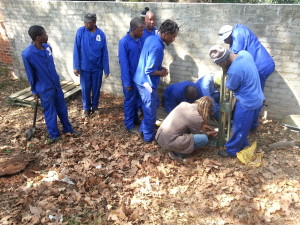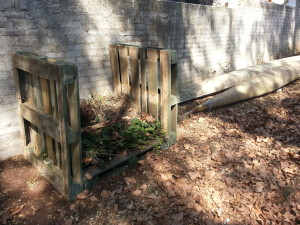I have done a workshop or two with great results and some with bad results. When St David’s Marist Inanda contacted me to train a few staff members, I did more research and came up with some notes and a worksheet for the staff.
I think its important information to share and process freely, and am more than happy to give more workshops at schools and sports grounds for staff wanting to grow their own food and medicine. I also advise on nutrient and carbon content plants to grow as green layers for the compost, some of which are ingredients in making either anti-pest or fertilizer for the garden. That, however is a different workshop. Please contact me, Netanya, on 072 146 9017 to make a workshop date in the Johannesburg area.
So, here is some important information to share:
What is the purpose of Composting?
• Composting is a way to reduce waste by re-using organic materials to recycle nutrients as a soil conditioner or multi-vitamin.
• Compost is the result of organic materials e.g. branches, leaves, food waste decomposing under controlled conditions.
• Compost is super – food for plants
Controlled conditions means YOU need to monitor the compost piles. If you maintain a pile with the correct moisture, air and carbon and nitrogen contents of the raw materials, then the decomposing organisms – insects, worms, bacteria and fungi do the rest.
What are carbon and nitrogen contents and why do we need them?
The organisms – insects, worms, bacteria and fungi depend on a ‘diet’ to survive. It is your job to take care of them, if you want to grow soil. They need nitrogen and carbon to survive.
This is important because the key to making great compost is to combine the right amount of moisture, and aeration with carbon and nitrogen materials in one pile. This means that making compost is like layering ingredients or materials in a dish of lasagna. It is in layers.
Maintenance of the Compost Pile
1. Cover the pile when it rains to prevent it from getting too wet or losing nutrients
2. Turn the heap regularly (every week or two) Building the pile on top of a palette allows air flow from below the pile which means you will need to turn the heap less regularly. A smelly compost heap tells us that it needs oxygen, it means it is time to turn the heap.
3. Water the heap in dry conditions
4. Chop or shred the leaves, twigs and other materials to speed up the decomposition process.
5. Be careful, it can get hot in there ![]()
This is the year of the soil, to some of us, it is perfect timing to prepare for a new earth as more and more people begin to implement permaculture gardening principles, earth heals. Healthy earth means a higher yield, stronger plants and far more than we can fathom ![]()



Leave a Reply